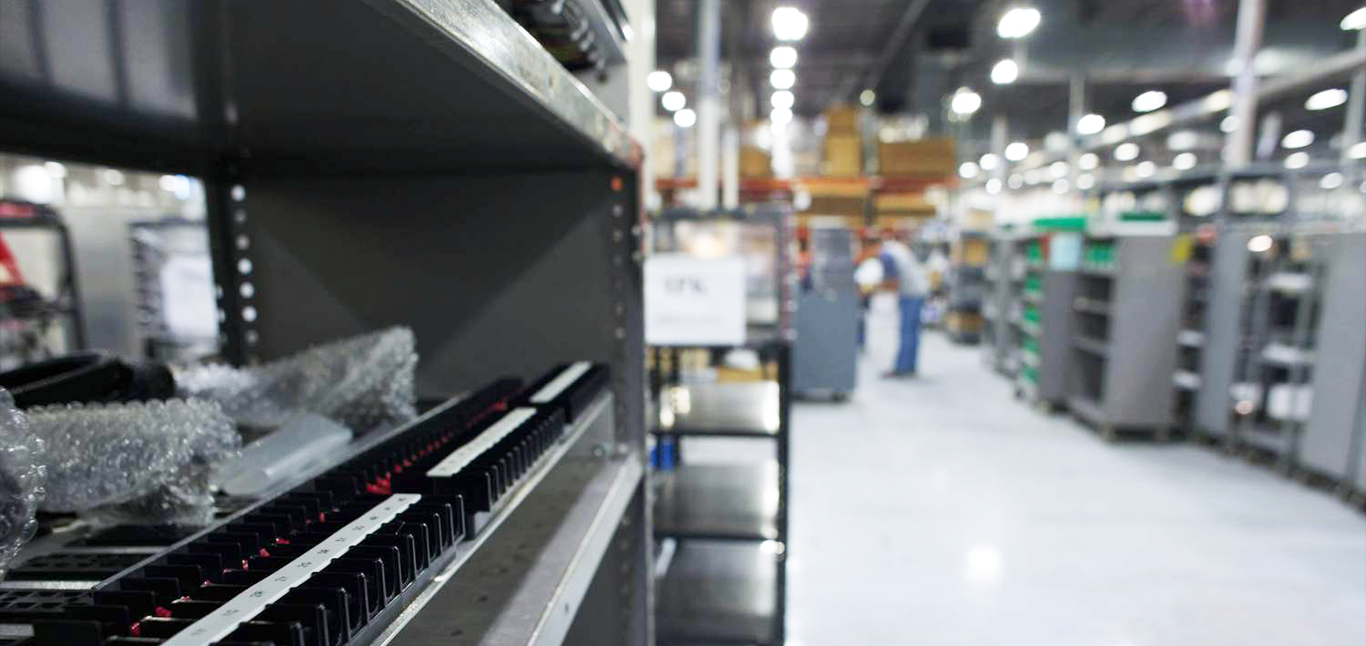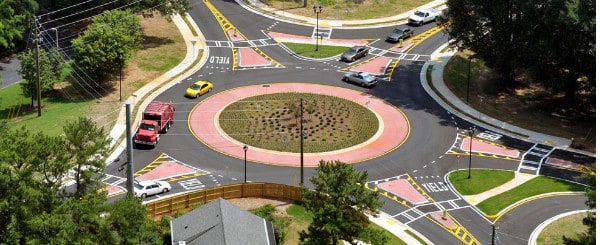Ten years, we wrote about roundabouts and Mike’s then-recent experience in recommending a roundabout on a project. Here’s the quick summary version of that project’s case study:
Lennar Corporation’s Park Place in Minnetrista
The issue of realigning two tee intersections on Highway 7 (one at County Road 11 and one at Kings Point Road) to become a single four-legged intersection had been studied several times in the past, but the realignment was at a stalemate. MnDOT was constrained on where they could safely put the new intersection because of curves in Highway 7. Three Rivers Park District was concerned about access and tree preservation on their parkland both north and south of Highway 7.
In 2005 Lennar Corp. proposed building a 287-acre residential development named Park Place north of Highway 7 along Kings Point Road. The City of Minnetrista completed an Alternative Urban Areawide Review (AUAR) for 512 acres including and around Park Place. A major conclusion of the AUAR was County Road 11 and Kings Point Road would need to be realigned to form a four-legged intersection controlled by a traffic signal to accommodate the traffic generated by Park Place safely.
Lennar and the City formed a unique task force (with help from several state legislators) bringing MnDOT, Three Rivers Park District, Carver County, Minnetrista, and Lennar staff together for monthly meetings. A compromise intersection design was agreed to after many meetings.
As part of the task force discussions, MnDOT brought up a multi-lane roundabout (two lanes of traffic going around the circle) as a potential alternative to a traffic signal. They discussed the safety benefits and efficiencies of roundabouts. Lennar liked what it heard, designing several roundabouts into Park Place. They considered the roundabout on Highway 7 a gateway.
In December 2006, Mike Spack was hired to conduct an Intersection Control Evaluation (an ICE Report), a new procedure MnDOT was developing which guides traffic engineers to look at a range of transportation improvements from doing nothing to building an interchange. The analysis quickly concluded a traffic signal or a roundabout should be built at the newly realigned intersection.
After spending nine months extolling the virtues of roundabouts, MnDOT staff started having second thoughts about a roundabout in this particular location. With a 55-mph speed limit, Highway 7 would be the first high-speed intersection with a multi-lane roundabout on one of MnDOT’s highways. They were concerned about bad publicity from potentially building a roundabout in the wrong situation.
Although Mike is on a short list of consultants MnDOT has “pre-qualified” to work on roundabouts, the team decided to bring in “out of town” experts to design the roundabout and model the intersection. This was a significant investment for Lennar, but they strongly believed in the roundabout for two reasons. First, the roundabout provides better traffic flow for Park Place residents. Eastbound commuters would have to yield at the roundabout to Park Place traffic turning left onto Highway 7 in the morning and Park Place traffic would be able to make a quick right when going home in the evening. Second, the roundabout is cheaper to build.
Five months of analysis proved either a roundabout or traffic signal would work. The draft ICE Report recommended the multi-lane roundabout because it operates as well as a traffic signal during rush hours, better than a signal outside of rush hours, and is significantly safer than a signal. Upon review, MnDOT decided they would remain neutral and accept the traffic signal or multi-lane roundabout. They, along with Carver County, deferred to the City Council of Minnetrista.
Wow! Rarely does MnDOT delegate decision making when it comes to their highways, but they decided to let local politics be a major factor in the process.
Lennar regrouped, and the team went on an educational campaign giving several “Roundabout 101” presentations to the Planning Commission and City Council. In September 2007 the roundabout versus traffic signal was brought before the City Council for their final decision. City staff strongly supported the roundabout and the City Council approved. It was then approved by Carver County and MnDOT. Unfortunately, the overall project was denied by the City Council in a subsequent vote, so the roundabout is not going to be built in the near future.
After a lengthy process and the ultimate denial of the overall development plan, we learned the following lessons:
- Government staff play it safe. When making a novel proposal, you should be prepared to thoroughly prove it will work.
- You need to have the right consultants on board to convince government staff.
- Patience is a virtue. The more agencies involved, the more time decisions will take.
- Know who the decision makers are and lobby accordingly.
So where are we now?
Although this specific development was not constructed, a roundabout has now been installed at the Highway 7/Kings Point Road intersection and another installed at a non-study intersection farther west. Our experience with agencies has also indicated they are more and more willing to accept alternative methods, and roundabouts in particular, in their goal to provide safe travel for all users. If we updated those lessons learned for today, here’s what we would state:
- Government staff are increasingly willing to review creative and unique solutions to solve transportation issues.
- You need to have the right consultants on board to thoroughly make your case for whatever solution is proposed. Don’t just state an answer, prove it will work.
- Patience continues to be a virtue. The more agencies involved, the more input can/will be provided and the more time decisions will take. That’s not necessarily a bad thing as the process can lead to better results.
- Know who the decision makers are and lobby accordingly.
The post The Life of a Roundabout Project appeared first on .


